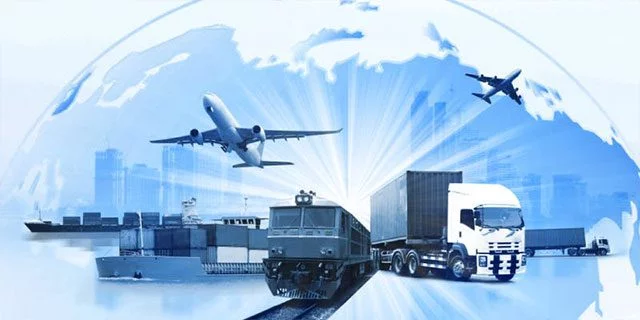Transporting goods efficiently and reliably is a crucial aspect of modern business operations. Whether you’re a manufacturer, retailer, or distributor, having a well-organized and seamless goods transporter system is essential for timely delivery and customer satisfaction.
In this comprehensive guide, we will explore the world of goods transport, including its significance, challenges faced, different modes of transportation, key considerations, and best practices. By the end, you’ll have a deeper understanding of how to optimize your goods transporter processes for success.
Goods Transport: A Key Driver of Supply Chain Success
Goods transport, often referred to as freight transportation, plays a pivotal role in the global supply chain. It involves the movement of goods from one location to another, ensuring they reach their intended destination safely and on time. Effective goods transport enables businesses to meet customer demands, maintain inventory levels, and optimize production cycles. Let’s delve deeper into the significance of goods transport and how it impacts various industries.
Importance of Goods Transport in the Global Economy
In an interconnected world where businesses operate on a global scale, efficient goods transport is the backbone of international trade. It facilitates the movement of goods across borders, connecting manufacturers, suppliers, and consumers worldwide. Without reliable goods transport, international trade would be significantly hindered, impacting economic growth and development.
Challenges in Goods Transport
While goods transport is crucial for business operations, it comes with its fair share of challenges. Understanding and addressing these challenges is essential for ensuring smooth and uninterrupted delivery processes. Let’s explore some common hurdles faced in goods moving:
- Infrastructure Limitations: Insufficient road, rail, or port infrastructure can pose significant challenges to goods transport, causing delays and inefficiencies.
- Traffic Congestion: Urban areas with heavy traffic congestion can cause delays and increase the risk of goods not reaching their destination on time.
- Regulatory Compliance: Adhering to complex regulatory frameworks, including customs procedures and transportation regulations, can be demanding and time-consuming.
- Logistics Management: Coordinating multiple logistics activities, such as warehousing, inventory management, and last-mile delivery, requires careful planning and execution.
- Fuel Costs and Environmental Impact: Rising fuel costs and environmental concerns push businesses to seek more sustainable and cost-effective transportation options.
- Security and Risk Management: Protecting goods from theft, damage, or loss during transportation requires robust security measures and risk management strategies.
Modes of Goods Transport: Choosing the Right Option
Selecting the most suitable mode of transport is crucial for optimizing goods transport. Different modes offer varying benefits in terms of speed, cost, reliability, and capacity. Here are the primary modes of goods transport:
Road Transport: Versatile and Accessible
Road transport is the most common mode of goods transport, known for its versatility and accessibility. Trucks and vans can reach almost any destination, from urban areas to remote regions, making road transport a popular choice for short and medium distances. It offers flexibility, enabling businesses to adjust delivery schedules based on customer requirements.
Air Transport: Speed and Global Reach
When speed and global reach are paramount, air transport provides an excellent solution. Although it is relatively expensive, air transport offers rapid delivery, especially for time-sensitive goods and perishable items. It is widely used for international trade, ensuring goods moving reach distant destinations within tight deadlines.
Intermodal Transport: Combining Modes for Efficiency
Intermodal transport involves using multiple modes of transportation to move goods from origin to destination efficiently. It maximizes the benefits of different modes, leveraging their strengths while minimizing limitations. For example, combining rail and road transport enables businesses to cover long distances swiftly while ensuring the last-mile delivery is conducted seamlessly.
Key Considerations for Efficient Goods Transport
To ensure smooth and efficient goods transport, businesses must consider various factors and implement best practices. Let’s explore the key considerations that can optimize your goods transport processes:
- Effective Route Planning: Careful route planning helps minimize transportation costs, optimize delivery schedules, and reduce the risk of delays. Utilize advanced route planning tools and consider factors like traffic conditions, fuel efficiency, and alternative routes.
- Inventory Management: Accurate inventory management is crucial for goods transporter. Maintain real-time visibility of stock levels, implement efficient warehouse management systems, and adopt just-in-time inventory practices to reduce holding costs and streamline transportation.
- Collaborative Partnerships: Forge strong relationships with reliable transportation partners, including carriers, freight forwarders, and logistics providers. Collaborate closely to ensure effective communication, minimize errors, and maximize the efficiency of goods transport.
- Technology Integration: Embrace technology solutions that enhance goods transporter operations. Implement transportation management systems (TMS), track-and-trace systems, and IoT-enabled devices for real-time monitoring, automation, and data-driven decision-making.
- Packaging Optimization: Proper packaging is essential for protecting goods during transit. Optimize packaging to minimize damage risks, reduce freight costs, and maximize the utilization of transport space.
- Risk Mitigation: Develop robust risk management strategies to mitigate potential disruptions. Assess and address risks related to theft, damage, natural disasters, and regulatory compliance. Obtain appropriate insurance coverage to protect your goods during transport.
Conclusion
Efficient and reliable goods transport is a critical element in the success of any business involved in supply chain operations. By understanding the importance of goods transport, addressing the challenges, choosing the right modes of transportation, and implementing key considerations, businesses can optimize their delivery processes and enhance customer satisfaction.
Embracing technology, forging collaborative partnerships, and adopting best practices will contribute to streamlined goods transport, ensuring timely delivery and cost-effective operations.
